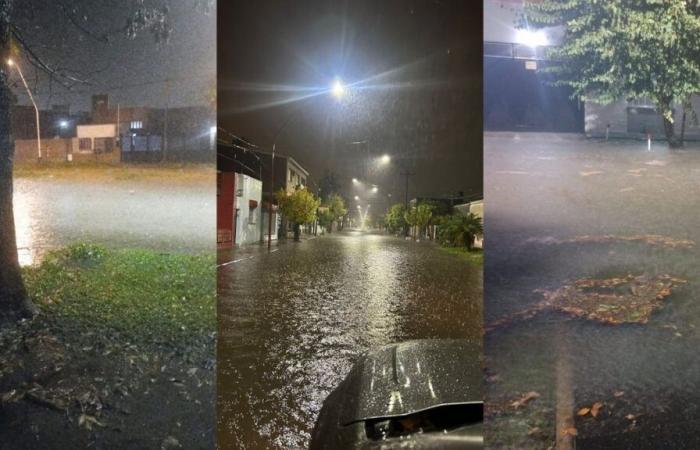In dialogue with AIRE, Pablo Lucero, Higher Technician in Meteorology, He explained that in less than two hours more than 90 millimeters of waterwith intensity peaks that exceeded the 140 mm/hourespecially among the 4:15 and 5:45.
Within that framework, Lucero said that, according to the Meteorological Station of the Faculty of Chemical Engineering – they were registered 90,6 mm with a maximum intensity of 147.6 mm/hour At 4:44 in the morning. For its part, in Colastiné, the accumulated reached the 81,2 mmwith spikes up 128.5 mm/hour.
But the most striking was the intense electrical activity. According to data from the SAT Santa Fe Meteorological and Climate Monitoring Center, they were counted More than 1,200 electric shocks From the previous night.
For his part, the Director of Risk Management of the Municipality, Luis Mariano Cabalconfirmed that the entire pumping system is working and that “Water has already started in most sectors”.
He added: “The truth that a lot of water fell in a very short time. The leaves, the waste and the minibasural ones obstruct the storm mouths and delay urban drainage. But now the system is responding,” he said.
In addition, the official explained that in some sectors, such as Barranquitas and Don Bosco, the drainage delayed more due to the cut of light that affected the functioning of a motobomb.
“When the energy returned, the motobomba that draws the same flow as the others was activated. There are 10,000 cubic meters per hour, but they need great accumulation of water to start,” Cabal said.
Cortada Street.jpg
Domingo Silva and San Jerónimo cut by people.
Storm mouths covered by the leaves of the trees
The air mobile toured the streets of the city of Santa Fe and recorded in images the impact of the storm in critical areas. One of the most graphic reports came from Aristobulo del Valle, between Cándido Pujato and Boulevardwhere the street was completely attached.
“The water reaches the sidewalk, it is very difficult to circulate. In storm mouths there are tons of accumulated leaves. It is impressive to see how they float, covering everything,” Juanchi Molina described in the CREO program.
At another point in the city, nearby Pedro Centeno, between Pedro Vittori and General Pazthe panorama was even more worrying. Five whole blocks were impassable And the stagnant water reached the height of the sidewalk:
“They asked us not to pass because the waves generated by the vehicles made water to the houses. There are neighbors taking water with buckets,” said Molina.
The neighbors placed objects such as A 30 cm high container To point out the water level. In addition, some cars were crossed in the street.






